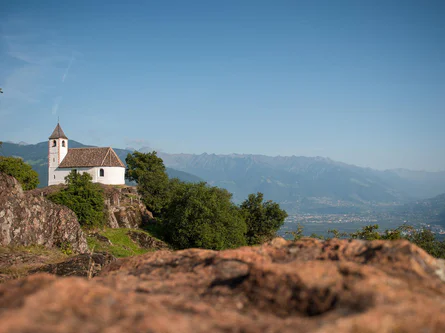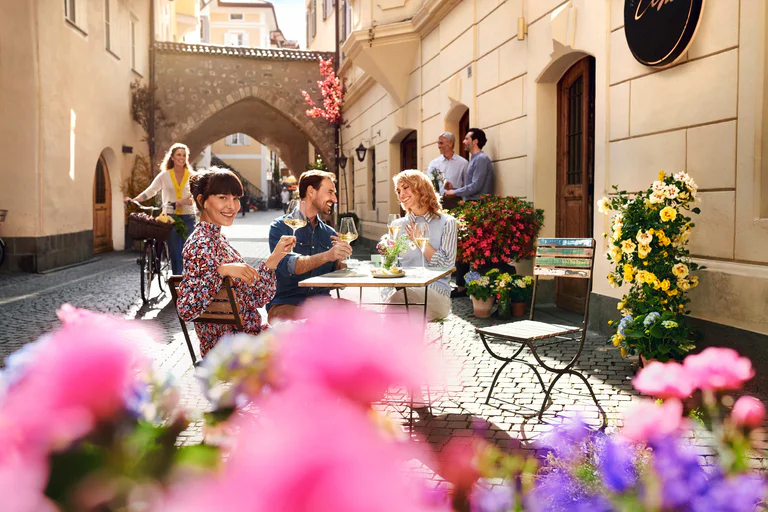This small, originally Romanesque, church named after the not so well known Saint, is situated on a unique basalt hill above Lana.
St. Hippolyt is a popular destination for excursions, a mythical place of energy since ancient times and an archaeological excavation site of prehistoric times. On St.Hippolyt one of the oldest settlement areas of the region was located.
The place was first mentioned in writing around 1200 A.D. but findings of Neolithic arrow heads, blades and scraping tools are proof of early settlements dating back 4,000 years.
Some of the excavated items are on display at the site. There are also traces of fire scenes that prove that this place was a scene of pagan rituals long before it became a Christian site.
Tipp
The exposed location above Lana offers a fantastic panoramic view and accounts for the popularity of St. Hippolyt: From here you can see 20 towns and around 40 castles, fortresses and ruins. There is a comfortable walking trail leading from Völlan to the little church.




































































